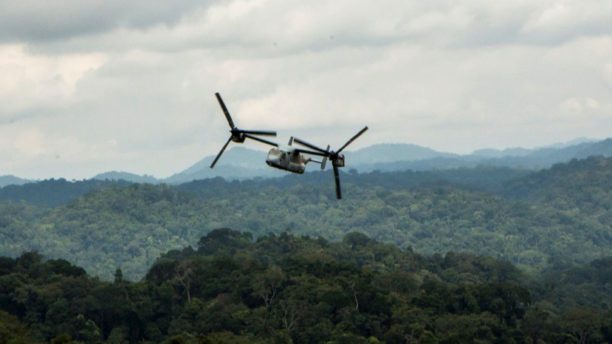The House and Senate Armed Services Committees have unveiled a $150 billion defense reconciliation proposal that marks a significant investment in drone technology and uncrewed systems across all domains. The bill represents a major commitment to strengthening the U.S. defense industrial base, with a particular focus on capabilities relevant to the Indo-Pacific region.
Major Investments in Drone and Uncrewed Systems
According to AUVSI‘s Michael Robbins, the reconciliation bill includes “major wins for the uncrewed, autonomy, and robotics industry.” In a recent LinkedIn post, Robbins credited sustained engagement by the Association for Uncrewed Vehicle Systems International and its member companies for the enhanced funding. The bill allocates substantial resources to a wide range of programs, including:
-
$1 billion to expand the one-way attack UAS industrial base
-
$50 million to accelerate advanced autonomy in one-way attack UAS
-
$1.1 billion for expansion of the small UAS (s-UAS) industrial base
-
$500 million for counter-UAS systems programs
-
$350 million for non-kinetic counter-UAS programs
-
$250 million for land-based counter-UAS
-
$200 million for ship-based counter-UAS
-
$1.5 billion in credit subsidies, authorizing up to $200 billion in loans and guarantees for defense industrial base and critical minerals projects
These investments are designed to build what Robbins calls the “Uncrewed Arsenal of Democracy,” directly supporting the modernization of U.S. military capabilities.
Army Transformation Memo: Drones at the Center of Modernization
In parallel with the Congressional funding push, Defense Secretary Pete Hegseth’s newly issued Army transformation memo mandates the most sweeping overhaul of Army force structure and acquisition in decades, with drones at the center of modernization efforts.
The directive orders every Army division to be equipped with unmanned systems and ground/air-launched effects by the end of 2026, and calls for the reduction of manned attack helicopter formations in favor of augmenting units with inexpensive drone swarms capable of overwhelming adversaries. Counter-drone systems are to be integrated into maneuver platoons by 2026 and companies by 2027, reflecting the growing threat of hostile drones on the modern battlefield.
The memo also calls for divesting outdated UAVs and legacy platforms, consolidating Army headquarters to better synchronize unmanned and kinetic effects, and shifting to capability-based funding for rapid adaptation of UAS and counter-UAS technologies. These changes, heavily influenced by lessons from Ukraine, aim to create a more agile, lethal, and technologically advanced Army positioned to address emerging threats in the Indo-Pacific region.
Counter-Drone Capabilities: Meeting Evolving Threats
The reconciliation bill’s strong emphasis on counter-UAS technology comes as drone threats continue to evolve. With $500 million allocated for counter-UAS systems and additional funds for land-based, ship-based, and non-kinetic solutions, the bill addresses concerns raised by Pentagon officials about inadequate defenses at U.S. military installations. According to testimony before the House Committee on Oversight and Government Reform, there were over 350 drone detections at 100 different military installations last year, highlighting the need for robust countermeasures.
Comprehensive Approach – and China’s Drone Surge
This sweeping U.S. investment in drone technology closely follows DRONELIFE’s report yesterday on China’s shift toward small drones and the resulting transformation of modern warfare (full article). While China has rapidly deployed large numbers of commercial-grade small drones, the U.S. approach outlined in the reconciliation bill and Hegseth’s memo is broad-spanning maritime, aerial, and autonomous systems, and balancing offensive capabilities with advanced counter-drone technologies.
Broader Defense Modernization Context
The drone and autonomy investments are part of a much larger $150 billion proposal that Republican lawmakers are advancing via reconciliation, bypassing the threat of a Senate filibuster. House Armed Services Committee Chairman Rep. Mike Rogers called the legislation “a historic investment of $150 billion to restore America’s military capabilities and strengthen our national defense.” However, some Democrats have criticized the process, with Rep. Adam Smith, ranking Democrat on the House Armed Services Committee, describing it as a “spending gimmick” and advocating for consideration through the normal authorization and appropriations process.
The reconciliation bill should also be viewed alongside broader defense modernization efforts, including the Army transformation and acquisition reform memo published by Secretary Hegseth, which outlines additional strategies for military modernization and workforce optimization.
Industry Impact and Next Steps
The bill’s $1.5 billion in credit subsidies, authorizing up to $200 billion in loans and guarantees, has the potential to unlock significant opportunities for drone manufacturers and suppliers. Notably, this surge in government investment comes at a time when private investment in the commercial drone sector has slowed, with many startups and established firms facing tighter funding conditions. Strong military demand is now helping to sustain development and innovation in the drone industry- funding next-generation technologies, autonomy, AI, and manufacturing capabilities. Much of this innovation is expected to transition rapidly from defense to commercial markets, accelerating the pace of advancement in areas such as logistics, inspection, and public safety.
Read more:


Miriam McNabb is the Editor-in-Chief of DRONELIFE and CEO of JobForDrones, a professional drone services marketplace, and a fascinated observer of the emerging drone industry and the regulatory environment for drones. Miriam has penned over 3,000 articles focused on the commercial drone space and is an international speaker and recognized figure in the industry. Miriam has a degree from the University of Chicago and over 20 years of experience in high tech sales and marketing for new technologies.
For drone industry consulting or writing, Email Miriam.
TWITTER:@spaldingbarker
Subscribe to DroneLife here.


